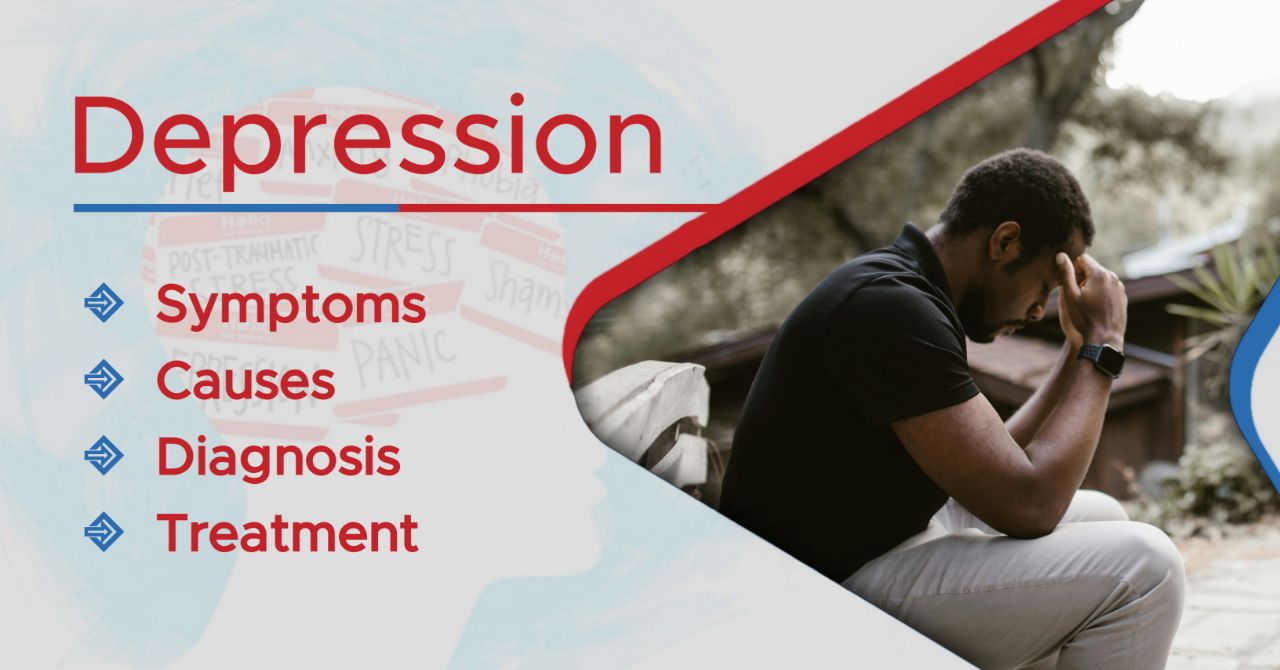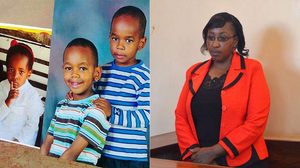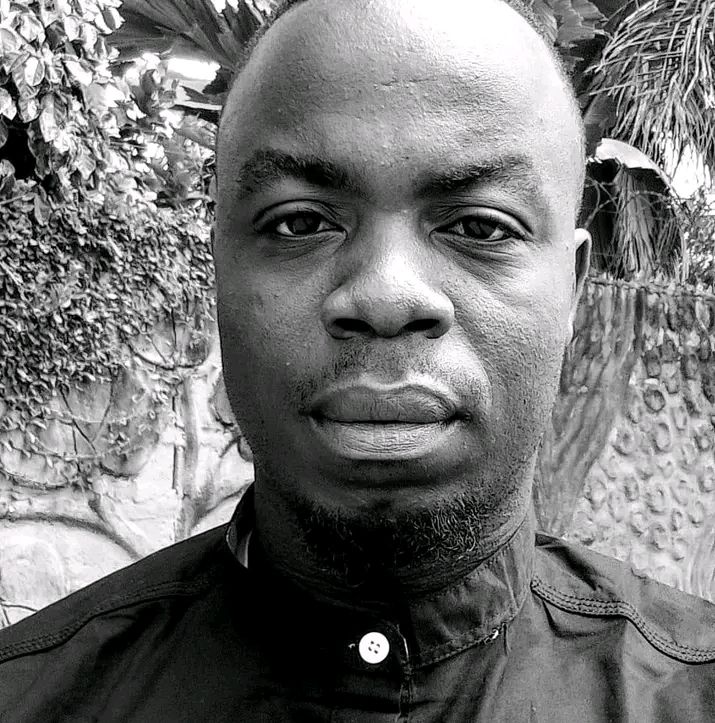
Depression
What is Depression? (The Basics)
Table of Contents
Reading Time: 18min
Let's be real: we all have bad days. Or even a bad week. Feeling sad, drained, or heartbroken after something tough happens is a totally normal part of being human. It hurts, but those feelings usually ease up over time.
Depression is different. It’s not just about having a rough patch; it’s like your get-up-and-go has gotten up and gone—and it’s not coming back. It’s a heavy feeling that sticks around for weeks, making everything feel harder. It colors how you see yourself, your life, and your future. Simple things, like deciding what to eat or taking a shower, can feel like huge tasks.
But here’s the most important thing to know: depression is a real medical condition, not a character flaw. You can’t just "cheer up" out of it, any more than you could wish away a broken arm. It’s not your fault. And the best part? It’s really treatable. Lots of people go through this, and with the right help, things can and do get better.
A big reason why it’s treatable is that depression is often linked to what’s going on in your brain physically. Think of it like this: your brain has chemicals that help regulate your mood, energy, and how you think. Sometimes, those chemicals get out of balance. That’s what medicine and therapy can help fix—they help your brain get back on track.
Recognizing depression can be tricky because it doesn't always look like just feeling sad. It often shows up in lots of different ways, affecting your emotions, your body, your thinking, and your actions. It’s like a cloud that settles over your entire life.
How It Feels (Emotional Symptoms):
This is more than just a bad mood. It’s a persistent feeling of sadness, emptiness, or numbness that just won’t lift. You might feel incredibly irritable, snapping at people over small things. A deep sense of hopelessness can set in, making you feel like things will never get better. Many people are overwhelmed by feelings of guilt or worthlessness, as if they are a burden to others for no clear reason.
How It Feels in Your Body (Physical Symptoms):
Depression doesn't just live in your mind; it wears your body out. You might feel a crushing fatigue, no matter how much you sleep. Your body can feel heavy and slow, like you’re moving through mud. Unexplained aches, pains, headaches, or stomach issues are common. Your appetite often changes drastically—you might lose interest in food entirely, or find yourself eating for comfort. Your sleep schedule gets thrown off, whether it’s lying awake with racing thoughts at 3 a.m. or sleeping for 12 hours and still wanting to stay in bed.
How It Affects Your Thinking (Cognitive Symptoms):
This is often called "brain fog." It becomes hard to concentrate, even on a TV show or a conversation. Making decisions, even small ones like what to wear, can feel utterly overwhelming. Your memory might feel fuzzy, like you’re constantly forgetting things. It’s not that you’re not trying; it’s that your brain feels like it’s running on a drained battery.
What It Looks Like (Behavioral Symptoms):
This is often what friends and family notice most. The things that used to bring you joy—hobbies, music, going out—suddenly feel pointless and empty. This loss of pleasure is called anhedonia. It’s natural to start withdrawing, canceling plans, and isolating yourself because socializing requires too much energy. You might start neglecting responsibilities at work, school, or home because you simply don’t have the motivation or energy to keep up.
The key thing to remember is that these symptoms stick around for most of the day, nearly every day, for at least two weeks. It's the combination and persistence of these feelings that signal it's more than just a bad day—it's a sign that you might need some support.
While we often use the word "depression" as a general term, it's important to know there are different types. Understanding which kind someone is experiencing helps in finding the right kind of support and treatment.
Major Depressive Disorder (MDD):
This is what most people think of when they hear "clinical depression." It’s characterized by intense, overwhelming symptoms—like the ones we just talked about—that make it very hard to function. An episode of major depression might last for weeks or months. For some, it's a single episode in a lifetime; for others, it can recur at different points.
Persistent Depressive Disorder (Dysthymia):
If Major Depression is like a sudden, intense storm, Persistent Depressive Disorder is more like a long-lasting, gray drizzle. The symptoms are often less severe but they are chronic, lingering for two years or more. People with this type might feel like they’ve just always been this way—a constant, low hum of sadness or disinterest that becomes their "normal." They can still function, but they rarely feel truly well or like themselves.
Perinatal & Postpartum Depression:
This refers to depression that happens during pregnancy (perinatal) or in the first year after childbirth (postpartum). It's far more serious than the common "baby blues," which involve brief mood swings and anxiety that fade quickly. This is a deep, lasting depression that can make it incredibly difficult for a parent to bond with their baby and handle daily care. It’s crucial to understand that it is not the parent's fault; it’s a medical condition caused by a complex mix of hormonal shifts, exhaustion, and the massive life change of having a child.
Seasonal Affective Disorder (SAD):
This is depression that has a predictable, seasonal pattern. For most people, it hits during the fall and winter months, when there’s less sunlight. It’s often accompanied by low energy, a need for more sleep, cravings for carbs, and weight gain. It’s like your body and mind are trying to hibernate. It typically lifts during the spring and summer. (A less common form can also occur in the summer).
Psychotic Depression:
This is a very severe type of depression where, alongside the crushing depressive symptoms, a person experiences psychosis. This means they may break from reality and have disturbing false beliefs (delusions), such as being convinced they are ruined or have committed a terrible sin, or they may see or hear things that aren’t there (hallucinations), like critical voices. This is a medical emergency that requires immediate treatment.
It's a common question: "What causes depression?" The truth is, there's no single answer. Unlike a simple infection with one clear cause, depression usually arises from a perfect storm of several factors mixing together. It's rarely just one thing. Think of it like a scale; too many risk factors can tip the balance.
Here’s a look at the different pieces that can contribute:
1. Biological Factors (Your Body's Wiring)
This is about the physical and built-in aspects of your health.
Brain Chemistry: Neurotransmitters are natural chemicals in your brain that help nerve cells communicate. An imbalance in these chemicals (like serotonin, norepinephrine, and dopamine) can play a key role in depression, affecting your mood and energy.
Genetics: Depression can sometimes run in families. If you have a close relative with depression, you might have a higher risk. This doesn't mean you're destined to have it, but it suggests a genetic vulnerability.
Hormones: Changes in hormone balances—from thyroid issues, menopause, childbirth, or other conditions—can trigger or contribute to depressive episodes.
2. Environmental Factors (Your Life Circumstances)
These are the external pressures and events that happen to you.
Trauma: Early childhood trauma, abuse, or neglect can have a lasting impact on the brain and significantly increase risk later in life.
Stress and Grief: Prolonged periods of high stress (from work, finances, or caregiving) or experiencing a significant loss, like the death of a loved one, can be powerful triggers.
Major Life Changes: Even positive changes, like moving, graduating, or getting married, can be stressful enough to contribute to depression.
3. Psychological Factors (Your Mind's Patterns)
This involves your individual personality and thought habits.
Personality Traits: People with tendencies toward low self-esteem, being overly self-critical, or being a chronic worrier may be more susceptible.
Other Mental Health Disorders: Having an anxiety disorder, PTSD, or an eating disorder can make you more likely to experience depression, as these conditions often overlap and feed into one another.
The Key Thing to Remember:
You can't point to any one of these factors and say, "That's why." It's almost always a combination. For example, someone might have a genetic predisposition (biological factor) and then go through a painful divorce (environmental factor), which tips them into a depressive episode.
Most importantly, having risk factors does not mean you are doomed to get depression. And conversely, someone with no obvious risk factors can still experience it. Understanding these causes isn't about placing blame—it's about understanding the illness so we can treat it with compassion and effective strategies.
Figuring out if what you're feeling is depression isn't like getting a blood test or an X-ray. There's no single scan that can show it. Instead, getting a diagnosis is a process of talking and listening, designed to understand your unique experience.
The Process: A Conversation, Not a Test
It usually starts with a conversation with a healthcare professional you trust. This could be your family doctor, a therapist, or a psychiatrist. Their main goal is to understand what you've been going through. They'll ask you a lot of questions about your mood, your daily life, your sleep, and your energy. It's important to be as open and honest as you can—this isn't about passing or failing, it's about getting you the right help.
Ruling Other Things Out
Because many symptoms of depression (like fatigue and sleep problems) can also be caused by other medical conditions (like a thyroid issue or vitamin deficiency), your doctor might do a physical exam or order some blood tests. This isn't because they don't believe you; it's a responsible step to make sure there isn't a different physical cause for how you're feeling.
The Psychological Evaluation
This is the core of the diagnosis. The professional will likely use a series of standard questions—often called a screening tool, like the PHQ-9 questionnaire. These questionnaires help them measure the severity of your symptoms and see how they line up with known patterns of depression. It gives structure to your conversation.
The Diagnostic "Checklist"
Professionals use a common guidebook called the DSM-5 (The Diagnostic and Statistical Manual of Mental Disorders). Think of it less like a strict rulebook and more like a common checklist that ensures everyone is using the same definition of depression. To get a diagnosis of Major Depressive Disorder, for example, your symptoms would need to meet a specific set of criteria from this manual, like lasting for at least two weeks and affecting your ability to function.
The entire process is really about listening to your story, understanding your patterns, and comparing them to established medical guidelines. It's the first and most crucial step on the path to feeling better, because you can't treat something properly until you know what it is.
The most important thing to know about treating depression is this: it is treatable, and there is hope. Finding what works for you is a journey, and it often involves trying a combination of approaches. The goal isn't just to feel "less sad"—it's to help you regain your energy, your focus, and your ability to enjoy life.
1. Psychotherapy (Talk Therapy)
Therapy isn't just about talking about your problems. It's about working with a trained professional to develop practical skills and new perspectives.
Cognitive Behavioral Therapy (CBT): This is one of the most common and effective types. It helps you identify the negative thought patterns that fuel depression and teaches you how to challenge and change them. It's like retraining your brain.
Interpersonal Therapy (IPT): This focuses on improving your relationships and communication skills, addressing problems in your interactions with others that may be contributing to your depression.
2. Medication
Antidepressants are medications that help correct the chemical imbalances in the brain linked to mood.
How they work: Common types like SSRIs and SNRIs slowly increase the availability of certain natural brain chemicals (like serotonin). This helps brain cells communicate better, which can improve mood and reduce anxiety.
Important to know: They are not "happy pills" or addictive. They take 4-8 weeks to start working fully, and it's crucial to take them exactly as prescribed by a doctor. Never stop taking them abruptly, as you need to taper off safely. It might take trying a couple of different medications to find the one that works best for you with the fewest side effects.
3. Lifestyle Changes
While not a cure on their own, taking care of your body is a powerful support to other treatments.
Exercise: Regular physical activity is a proven mood-booster. It releases endorphins (natural feel-good chemicals) and can improve sleep and energy.
Diet & Sleep: Fueling your body with nutritious food and establishing a regular sleep routine can have a huge impact on your mental well-being.
Social Support: Making an effort to connect with understanding friends, family, or support groups can combat isolation and remind you that you’re not alone.
4. Combination Therapy
For many people, the most effective path is combining therapy and medication. Therapy gives you the tools to manage your thoughts and behaviors, while medication can provide the biochemical stability needed to effectively use those tools. Think of it like using both a cast and physical therapy to heal a broken arm—they work best together.
5. Other Treatments (For When Standard Approaches Aren't Enough)
If someone has "treatment-resistant depression," meaning several medication and therapy attempts haven't worked, there are still excellent options.
TMS (Transcranial Magnetic Stimulation): This is a non-invasive procedure that uses magnetic fields to stimulate nerve cells in the part of the brain involved in mood control. It's done while you're awake and has minimal side effects.
ECT (Electroconvulsive Therapy): This often comes with an outdated, scary reputation. Modern ECT is safe and performed under anesthesia. It's highly effective for very severe, life-threatening depression. It's considered when other treatments have failed or when someone needs to get better quickly.
The path to recovery is personal. What works for one person might be different for another. The key is to work with a doctor or therapist to create a plan that’s tailored just for you. It takes courage to start, but help is available.
If You Think You Might Have Depression
This is the hardest but most important step. Be gentle with yourself.
Talk to Someone You Trust: You do not have to do this alone. Reaching out to a close friend, family member, or mentor can feel like a huge weight lifting. Just saying, "I've been really struggling lately, and I think I might be depressed" can open the door to support.
See a Doctor or Mental Health Professional: This is the most crucial action step. Your regular doctor is a great place to start. They can check for any physical causes and give you a referral to a specialist. Making that appointment is a act of courage and self-care.
Reach Out to a Helpline: Helplines are free, confidential, and available 24/7 with trained people who want to listen. You don't need to be in crisis to call. They can offer support and help you find local resources.
If You're Supporting Someone with Depression
Your support can make a world of difference. Here’s how to help.
What TO Do:
Listen without judgment. You don't need to have the answers. Just be there. Say things like, "I'm here for you," or "That sounds really difficult. Tell me more."
Offer specific help. Instead of "Let me know if you need anything," try "Can I bring over some dinner tonight?" or "I'm going to the store, what can I pick up for you?"
Gently encourage them to seek help. You could say, "It sounds like you're really hurting, and that's what doctors are for. Would you be willing to make an appointment? I can go with you if you want."
Validate their feelings. Let them know it's okay to feel how they feel. Say, "It makes sense that you feel that way."
What to AVOID Saying:
Don't try to "fix" them or minimize their pain. Avoid phrases like:
"Just think positive!"
"But you have so much to be happy about."
"Everyone gets sad sometimes."
Don't give advice they didn't ask for.
Don't take their withdrawal or irritability personally. It's the illness, not you.
Take care of yourself, too. Supporting someone can be draining. You can't pour from an empty cup.
Myths vs. Facts
Misconceptions about depression can create shame, stigma, and prevent people from seeking the help they need. Let's clear some of them up.
Myth: "Depression is a sign of weakness or a character flaw."
Fact: Depression is a real medical illness, not a personal failing. You wouldn't tell someone with diabetes or heart disease to "just be stronger." Depression involves measurable changes in brain chemistry and function. It takes immense strength to battle it every day. Seeking help is a sign of courage and self-awareness, not weakness.
Myth: "You can just 'snap out of it' or 'think positive' to get over depression."
Fact: You cannot will yourself out of depression. If it were that simple, no one would suffer from it. Depression affects the very tools you need to "snap out of it"—your motivation, your brain chemistry, and your thought patterns. Recovery isn't about positive thinking; it's about targeted treatment, like therapy and medication, that helps heal the brain and build new skills.
Myth: "Antidepressants are 'happy pills' that change your personality or are addictive."
Fact: Antidepressants are not sedatives or "happy pills." They are non-addictive medications that work gradually to correct imbalances in brain chemistry. They don't create a fake feeling of happiness; they help lift the paralyzing symptoms of depression so you can feel more like yourself again and fully engage in therapy and life.
Myth: "Therapy is just complaining about your problems."
Fact: Therapy is active skills training, not passive venting. Modalities like Cognitive Behavioral Therapy (CBT) teach you practical, evidence-based tools to manage negative thoughts, change unhelpful behaviors, and cope with challenges effectively. It's hard work that empowers you to become your own best resource.
Myth: "If you have a good life, you can't be depressed."
Fact: Depression does not discriminate. It can affect anyone, regardless of their external circumstances, wealth, success, or family life. It’s caused by a complex mix of genetic, biological, environmental, and psychological factors, not just a checklist of "bad things." You can have a "perfect" life on paper and still be depressed.
Myth: "You have to be sad all the time to have depression."
Fact: Depression often manifests as numbness, emptiness, or irritability more than sadness. Many people experience a total loss of interest or pleasure (anhedonia), extreme fatigue, physical aches, and an inability to concentrate. The emotional range isn't just "sad"; it's often a feeling of nothingness.
It’s important to remember that depression, while incredibly difficult, is a highly treatable condition. This isn't just a platitude; it's a fact backed by decades of medical research and the lived experiences of millions of people who have found their way back to themselves.
Recovery is a journey, and it looks different for everyone. For some, it means the symptoms go away completely. For others, it’s about learning to manage the condition effectively, much like someone would with asthma or diabetes, leading a full and vibrant life. It might involve some trial and error to find the right combination of treatments—the therapy, medication, or lifestyle changes that work for you.
There will be good days and more challenging ones, but with proper diagnosis, support, and treatment, the overwhelming majority of people with depression see significant improvement. The feeling of heaviness can lift. Energy and interest can return. You can reconnect with the things and the people you love.
Asking for help is the brave first step on this path. It’s an affirmation that you believe a better future is possible. And it is. Healing is not only possible; it is the expected outcome when you reach out for the support you deserve. You can get through this.
| Resource Type | Service Provider | Contact Information |
| Crisis & General Support | Kenya Red Cross | 1199 |
| Befrienders Kenya | 0722 178177 | |
| Emergency Medicine Kenya Foundation | 0800 723 253 | |
| Specialized & Professional Help | Mathari National Teaching & Referral Hospital | +254-020-2337694 / 0713699715 |
| Psychiatry & Therapy Platforms | https://psychiatry.co.ke/ https://cbtkenya.org/ | |
| Other Specific Support | NACADA | 1192 |
| Childline Kenya | 116 |
Professional Treatment and Hospital Services
For a formal diagnosis and long-term treatment plan, consulting professional services is a crucial step.
Mathari National Teaching and Referral Hospital: This is the main public psychiatric referral hospital in Kenya. They provide essential services such as psychiatric evaluations, counseling, and medication management
You can contact them via the numbers listed in the table above.
- Private Psychiatrists and Therapists: For those who can access it, the private sector offers another pathway to care. Websites like psychiatry.co.ke connect individuals with licensed psychiatrists and psychologists for both in-person and online therapy sessions. CBT Kenya is another example, specializing in cognitive behavioral therapy for depression.
Support Organizations and Broader Initiatives
Several organizations are working to expand access to depression care in Kenya, often through community-based and innovative approaches.
The Kenya Alliance for Mental Health (KAMH): This organization focuses on breaking down barriers to mental healthcare through public education, advocacy, and training programs for community caregivers.
StrongMinds: This organization specifically addresses depression by providing group therapy to women and adolescents across six counties in Kenya, often in partnership with local community organizations and county governments.
Innovative Projects: Research is ongoing into new ways to reach people, such as the "Healthy Moms" program, which uses an AI-powered mobile service named "Zuri" to provide support for perinatal depression via text messages.
What You Should Know
When seeking help for depression in Kenya, it's helpful to be aware of the broader context.
Understanding the System: Kenya's mental health system is decentralized, with services delivered at the county level. There is a severe shortage of specialists, with only about 120 psychiatrists for a population of over 50 million people. This means you may encounter wait times, but persistence is key.
Combating Stigma: Stigma remains a significant barrier that prevents many from seeking help. Remember that depression is a common and treatable medical condition, and reaching out for support is a sign of strength.
Your Role in Recovery: In addition to professional help, lifestyle strategies can support your recovery. Mathari Hospital highlights the benefits of staying active, connecting with others, practicing mindfulness, maintaining a routine, and limiting alcohol and drug use.
Disclaimer: This information is a guide based on available public knowledge. Services and contact details may change. Always verify directly with the healthcare providers.









